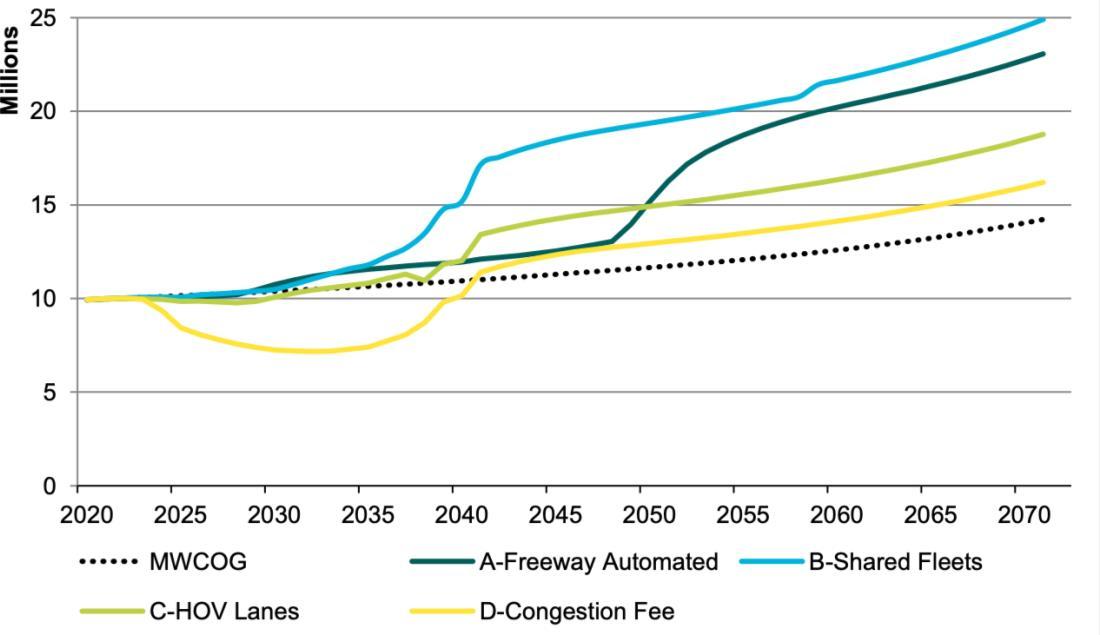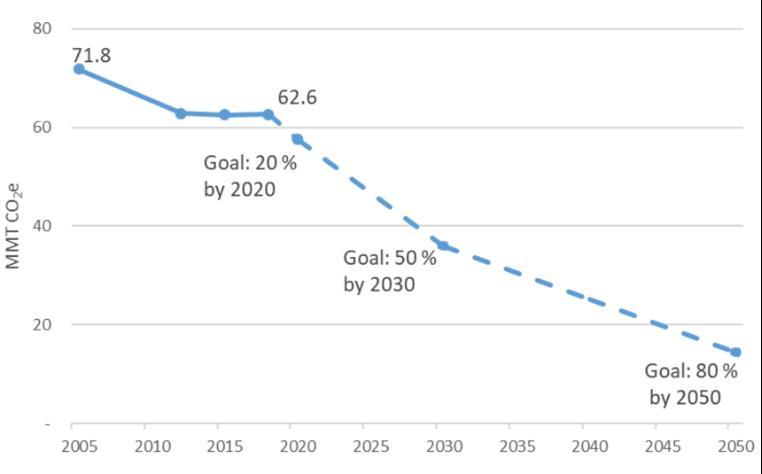
1 minute read
Autonomous Vehicles
Autonomous Vehicles Could Significantly Increase VMT and Wipe Out GHG Reductions
Driverless autonomous vehicles (AVs) could lead to huge increases in auto travel from “zeropassenger” car trips – that is, empty cars shuttling home after dropping off their passenger and later returning to pick them up. These “empty” or “zero passenger” miles – even if from electric cars – would significantly increase congestion and energy use from driving.49, 50, 51, 52 This is yet another reason why we need to reduce the overall need for car travel to get to work and access basic services.
The San Francisco Bay Area conducted scenario planning for the region’s long-range vision, Plan Bay Area 2050. The results showed that AVs, absent policies to limit zero-passenger miles, would not only cancel out forecast VMT reductions from smart growth and transit improvement scenarios, but would also lead to significant increases in per capita and total VMT above current levels. 53 A scenario planning study of AVs in the District of Columbia showed similar results (see Figure 10). Although AVs provided some benefits, such as more affordable and safer travel in the scenarios, VMT increased in all four scenarios compared to COG forecasts, and per capita VMT increased from 12 percent to 47 percent in three of the scenarios. Only the scenario with a congestion fee kept VMT in check. 54 The same outcomes would likely happen across the Greater Washington metropolitan area, showing the need to address the need to drive, especially using personal vehicles, in advance of the roll-out of AVs that could swamp our streets – and make our climate goals harder to achieve without the right policies in place.
Figure 10: DC Autonomous Vehicle Scenarios, Vehicle Miles Traveled
Source: Image from DC AV Study, Final Report (2020), prepared by AECOM and DC Sustainable Transportation for DDOT, page 5
17








